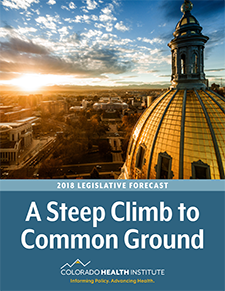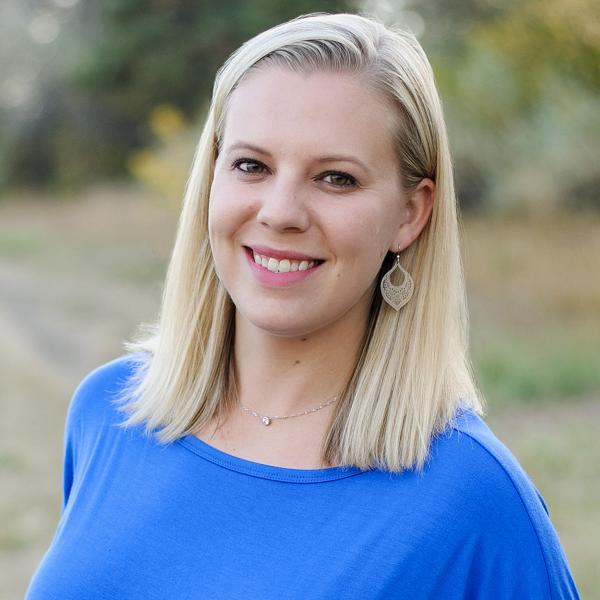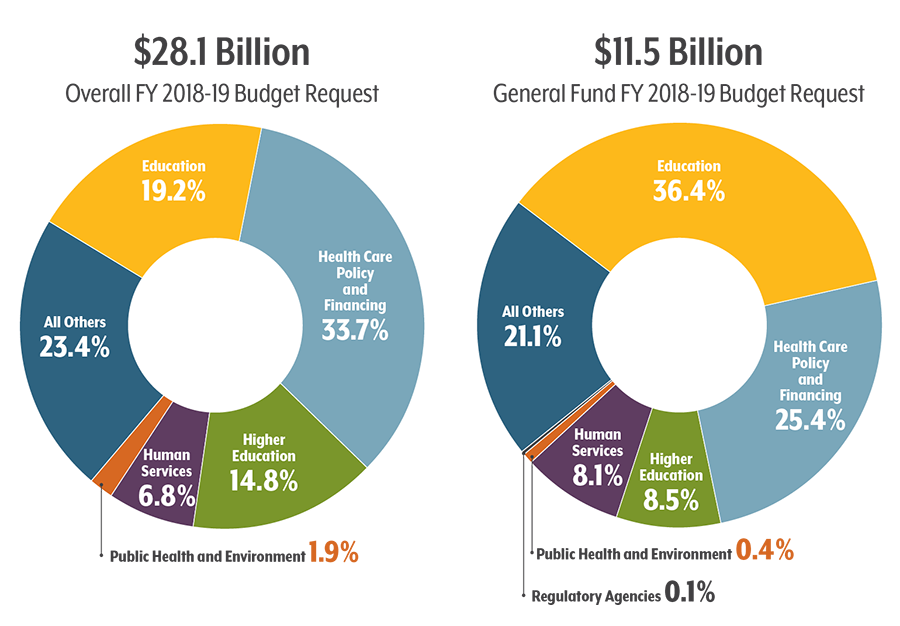Bills to Watch
CHI expects to see a full slate of health bills in the legislature in 2018, despite the heavy presence of party politics and campaigning. Among the issues to watch:
Behavioral Health
Behavioral health includes mental health and substance use treatment, and this area — especially substance use — will be a major focus. It’s in the legislative spotlight because of a growing body of data about drug overdoses, which have increased in every Colorado county over the past decade, fueled by a sharp rise in opioid addiction. The solid bipartisan support for addressing the problem is unmatched by most other big-ticket health topics.
After the 2017 session, the legislature assembled a 10-member bipartisan interim committee to research and draft bills related to opioids and other substances. The committee, chaired by Rep. Brittany Pettersen (D-Lakewood) and Sen. Kent Lambert (R-Colorado Springs), recommended six bills for introduction. These bills, which do not yet have numbers, tackle drug use on several fronts. While all but one carry a price tag for the state, there’s enough momentum around the issue to give the bills a real chance to pass.
Bill A would establish the bipartisan group as a year-round study committee through 2023. It also calls for more continuing education for providers about safe prescribing of opioids and allowing school-based health centers to fund substance use treatment.
Bill B would limit opioid prescriptions for most conditions to no more than seven days’ worth at a time, and would require prescribers to check patients’ history using the prescription drug monitoring program before issuing refills.
SPOTLIGHT
Bill C would permit the opening of a supervised injection facility, where heroin users can take the drug in a safer setting. These facilities are under consideration in several states but do not yet exist anywhere in the country. The bill also would allow county and district public health agencies and hospitals to provide better access to clean syringes for drug users.
Bill D would add licensed clinical social workers, professional counselors, clinical psychologists and others to the list of health care providers eligible for the Colorado Health Service Corps program, which helps repay student loans of those who work in rural and underserved areas. Additionally, it would create a scholarship program for certified addiction counselors in high-need areas.
Bill E would direct Colorado’s Medicaid program to seek a federal waiver to receive matching funds for residential and inpatient treatment for substance use.
Bill F would allow health professionals to prescribe medication-assisted treatment for Medicaid enrollees and those with private insurance without first having to seek approval from insurers.
CHI has been heavily involved in research on opioids and substance use since last spring, including as the lead author of a report mandated by HB 17-1351 to study the feasibility and impacts of adding an inpatient treatment benefit through Medicaid, which was subsequently recommended in Bill E (above).
Hospital-Focused Legislation
SPOTLIGHT
Legislators will debate a renewed effort to require more transparency from hospitals, specifically about their finances. Hospitals successfully opposed a 2017 bill backed by the governor’s office that would have forced them to open their books for wider public inspection. The Colorado Hospital Association recently released some of the data requested in that bill, but legislators are poised to ask for more.
Sen. John Kefalas (D-Fort Collins) will once again propose legislation to regulate freestanding emergency departments, which are more prevalent in Colorado than anywhere else in the country except Texas. Similar efforts have failed since 2014. Federal rules against discouraging people from utilizing emergency care centers have complicated attempts to warn patients about the costs associated with these facilities, and a temporary moratorium on building new FSEDs — included in Kefalas’s 2017 defeated bill — went too far for some people.
The issue of surprise medical bills is also rumored to be back, after the 2017 session saw little attention paid to it. High charges often result when patients are treated at an in-network facility but, without their knowledge, by an out-of-network provider. Legislators could push for more consumer protections.
Insurance Price Issues
Insurance prices, especially on the individual market, consistently hold a place in Colorado’s health policy conversations.
Mountain-area legislators will try again to flatten premiums by switching the state from its current nine geographic rating regions for insurance to just one, despite a 2016 opinion from the Division of Insurance (DOI) that the plan would not work well. Rep. Millie Hamner (D-Dillon) and Rep. Bob Rankin (R-Carbondale), who sit together on the Joint Budget Committee, continue to hear horror stories from their constituents about extremely costly premiums that some simply cannot pay.
There will undoubtedly be other conversations about premiums and affordability. For example, Senate Health and Human Services Committee chair Jim Smallwood (R-Castle Rock) plans to sponsor legislation to provide relief for individual market customers, and county commissioners who live outside the Front Range continue leading conversations about local or regional solutions.
SPOTLIGHT
The DOI completed a study last fall, mandated by SB 17-300, looking at the feasibility and potential impacts of a state reinsurance program or other method to control costs. Reinsurance is essentially insurance for insurance companies to protect them against very high-cost claims, and it has made national headlines for its success in Alaska. While it seems a promising method to lower premiums across the board, the big questions will be: What’s the cost, and how would the state pay for it?
These efforts focus on a relatively small portion of the state’s population — the eight percent who buy their insurance through the individual market. While that’s a significant number, more Coloradans are affected by changes to public insurance. Legislators such as Rep. Susan Beckman (R-Littleton) have expressed concerns about the role of government in providing insurance coverage to so many residents, and many others are troubled by the growing costs of public programs, especially Medicaid. Legislators could request changes to how Health First Colorado is administered, which would require approval of a federal waiver request.
Grab Bag
Transparency is a hot topic going into the session. Rep. Mike Foote (D-Lafayette) will sponsor a bill that would mandate broad pricing transparency in the health care system through a detailed list of charges, both online and in print, available at health care facilities throughout the state. This effort is sure to draw industry opposition, and supporters have already said that if it doesn’t pass, they plan to try putting it on the ballot for the next statewide election.
Pharmaceutical price transparency is also contentious. After two failed attempts at mandating transparency across drug types, Rep. Dylan Roberts (D-Eagle) – newly appointed to replace Rep. Diane Mitsch Bush of Steamboat Springs, who left to focus on her congressional campaign – will propose a narrower approach: requiring pricing information for diabetes drugs only.
An early-session effort will focus on passing the Enhanced Nurse Licensure Compact, an agreement that has already been approved by the majority of states. If passed by the legislature just eight working days into the session (January 19), registered nurses in Colorado with a multistate license will be grandfathered into a new agreement. Otherwise, they will be subject to another round of fingerprinting or federal background checks. The bill has bipartisan sponsorship and a long list of supporters.
Several legislators will continue working to improve suicide prevention efforts. Suicide is the leading cause of injury death in Colorado, and the state has experienced a stubbornly high suicide death rate for years. Strengthening prevention efforts is likely to draw bipartisan backing.
And multiple bills are lined up to broaden protections for sexual assault victims. This issue is hitting especially close to home for state legislators after several sitting lawmakers have been accused by staffers, lobbyists and fellow legislators of sexual harassment at the capitol.
Finally, a ban will be proposed on step therapy for patients suffering from advanced cancers. Bills banning step therapy — where patients must try the generic version of a drug and prove it does not work before taking a specialty drug — have faced opposition from insurers in recent sessions.
Topics Outside the Legislature
Colorado is in the final days of open enrollment for private insurance — a period that has already ended for most other states, but was extended here to January 12. Policymakers are eager to see how the state fares in terms of sign ups during the Trump administration, which has worked in several ways to limit enrollment in ACA coverage. They also want to know if the state marketplace, Connect for Health Colorado, will prove to be financially sustainable. The marketplace has critics as well as supporters in the state legislature, and its leadership appears regularly before the state Health Insurance Exchange Oversight Committee.
There is also a great deal happening in Congress that may affect health coverage, services and the budget in Colorado.
The ACA survived several attempts last year to repeal and replace it, but that doesn’t mean Congress and the Trump administration won’t chip away at the law through altering or repealing important provisions, such as funding for outreach and education efforts during open enrollment. Health policy stakeholders will be watching to see what plays out this year, and how much the ACA is featured in other high-profile debates.
And the tax reform plan passed by congressional Republicans in December may have seemed outside the health care realm, but several big pieces of the bill will directly affect the insurance market. Chief among them is the repeal of the individual mandate, which has required most people to purchase insurance coverage or pay a penalty. Estimates vary for how much this will affect insurance premiums and coverage levels across the country. State legislators could consider ways to mitigate the impact in Colorado.
Meanwhile, Congress continues working to avoid a budget shutdown. Legislators have voted multiple times to approve short-term budget extensions while they work on a longer-term deal. The current continuing resolution, or extension, expires on
January 19.
Of special concern for health care stakeholders: funding for the Children’s Health Insurance Program (CHIP), which covers about 75,000 kids and pregnant women in Colorado, and funding for community health centers. Both have been waiting for renewed approval since last September, and there would be major fiscal and coverage implications if Congress does not act soon. The newest stopgap budget includes reduced funding for CHIP (CHP+ in Colorado) through the end of March and temporary funding for health centers, but does not offer a long-term extension for either program. The national Prevention and Public Health Fund is also facing cuts.
If agreements aren’t reached, state legislators may be tasked with approving emergency supplemental funding. In late December, the JBC approved such funding to extend CHP+ for one month if needed. Lawmakers may be asked once again to pick up the tab if Congress doesn’t act. So far, legislators seem willing to act, but their pocketbooks may be limited.




